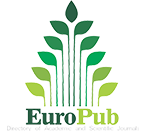Is AI image generation a creative or optimize tool in product design process?—The usage of AI image generation tools for vehicle shape as an example
Article ID: 8867
Vol 9, Issue 1, 2025
Vol 9, Issue 1, 2025
VIEWS - 2227 (Abstract)
Abstract
This study explores the shape thinking processes and decision-making factors of designers when using AI image generation tools for conceptualizing the shapes of two-wheeled vehicles through four design tasks. Eight designers were invited to create hand-drawn sketches based on a specific aesthetic direction (technological geometry), followed by a shape divergence exercise using two AI graphics tools, Stable Diffusion and Vizcom, to generate images from text prompts. After selecting the designs closest to their original concepts and their favorite designs, the designers used an iPad to explore different shape directions (technological biology) for partial shape modifications. Finally, retrospective interviews were conducted to understand whether there were differences in designers’ thinking process regarding the use of various AI tools for shape conceptualization, as well as their focal points regarding design modification and shape thinking at different stages of the process. The research findings indicate that current AI tools are more suitable for shape divergence. If designers wish to achieve shape convergence, they need to be more familiar with the various settings of AI image generation tools and understand which prompts significantly influence specific shape characteristics. Designers’ perceptions of shape modification primarily revolve around: 1. Outline contours, 2. Parting lines, 3. Variations in surface curvature, and 4. The resulting features (light and shadow effects). Furthermore, it is recommended that future AI image generation tools, if developed as professional assistive tools for product design, should provide two modes—shape divergence and convergence—focusing on both the main shape and details. Additionally, it is suggested that developing AI-3D technologies should address the four key aspects of shape manipulation presented in this study, offering adjustments for overall appearance and detailing the contour lines of parts, including the manipulation of surface curvature and shape positioning.
Keywords
artificial intelligence; image generation; design process; vehicle shape design; motorcycle design
Full Text:
PDFReferences
- Chiu, C. Y. (2024) The Impact of AI Image Generation on Product Styling Design (Master’s thesis, National Yunlin University of Science and Technology, Taiwan). Retrieved from https://hdl.handle.net/11296/ew25t2
- Collins, C., Dennehy, D., Conboy, K., & Mikalef, P. (2021). Artificial intelligence in information systems research: A systematic literature review and research agenda. International Journal of Information Management, 60, 102383.
- Design Council. (2005). Framework for innovation: Design council’s evolved double diamond. Design Council. Retrieved from https://www.designcouncil.org.uk/our-work/skills-learning/tools-frameworks/framework-for-innovation-design-councils-evolved-double-diamond.
- Fang, Y. M. (2023, April). The role of generative ai in industrial design: enhancing the design process and learning. In IEEE conference proceedings: 2023 9th International Conference on Applied System Innovation (ICASI). Chiba, Japan on (pp. 21-25).
- Friedman, T. L. (2005). The world is flat: A brief history of the twenty-first century. Macmillan.
- Goodfellow, I., Pouget-Abadie, J., Mirza, M., Xu, B., Warde-Farley, D., Ozair, S., ... & Bengio, Y. (2020). Generative adversarial networks. Communications of the ACM, 63(11), 139-144.
- Howard, T. J., Culley, S. J., & Dekoninck, E. (2008). Describing the creative design process by the integration of engineering design and cognitive psychology literature. Design studies, 29(2), 160-180.
- Hsiao, K. A., & Chen, L. L. (2006). Fundamental dimensions of affective responses to product shapes. International Journal of Industrial Ergonomics, 36(6), 553-564.
- Hsiao, S. W., & Chou, J. R. (2004). A creativity-based design process for innovative product design. International journal of industrial ergonomics, 34(5), 421-443.
- Hsu, S. H., Chuang, M. C., & Chang, C. C. (2000). A semantic differential study of designers’ and users’ product form perception. International journal of industrial ergonomics, 25(4), 375-391.
- Jiang, W. (2022). Graph-based deep learning for communication networks: A survey. Computer Communications, 185, 40-54.
- Jiang, W., & Luo, J. (2022). Graph neural network for traffic forecasting: A survey. Expert systems with applications, 207, 117921.
- Krish, S. (2011). A practical generative design method. Computer-Aided Design, 43(1), 88-100.
- Kulkarni, C., Druga, S., Chang, M., Fiannaca, A., Cai, C., & Terry, M. (2023). A word is worth a thousand pictures: Prompts as ai design material. arXiv preprint arXiv:2303.12647.
- Lee, Y. H., & Chiu, C. Y. (2023, July). The Impact of AI Text-to-Image Generator on Product Styling Design. In International Conference on Human-Computer Interaction (pp. 502-515). Cham: Springer Nature Switzerland.
- Lee, Y. H., & Lin, T. H. (2023, July). The feasibility study of AI image generator as shape convergent thinking tool. In International Conference on Human-Computer Interaction (pp. 575-589). Cham: Springer Nature Switzerland.
- Ma, M.-Y., Hsieh, E. C.F and Chih, J.C. (2023). Empathizing with? a study on the influence of design thinking workshop on empathy. Journal of Design, 28(3), 25-46.
- Orsborn, S., Cagan, J., & Boatwright, P. (2009). Quantifying aesthetic form preference in a utility function.
- Perez Mata, M., Ahmed-Kristensen, S., Brockhoff, P. B., & Yanagisawa, H. (2017). Investigating the influence of product perception and geometric features. Research in Engineering Design, 28, 357-379.
- Russell, S. J., & Norvig, P. (2016). Artificial intelligence: a modern approach. Pearson.
- Tang, C. Y., Fung, K. Y., Lee, E. W., Ho, G. T., Siu, K. W., & Mou, W. L. (2013). Product form design using customer perception evaluation by a combined superellipse fitting and ANN approach. Advanced Engineering Informatics, 27(3), 386-394.
- Vermillion, J. (2023). Giving Up Control: Hybrid AI-Augmented Workflows for Image-Making. Tradition Innovations in Arts, Design, and Media Higher Education, 1(1), 3.
- Zhang, L., Rao, A., & Agrawala, M. (2023). Adding conditional control to text-to-image diffusion models. In Proceedings of the IEEE/CVF International Conference on Computer Vision (pp. 3836-3847).
DOI: https://doi.org/10.24294/jipd8867
Refbacks
- There are currently no refbacks.
Copyright (c) 2025 Yu-Hsu Lee
License URL: https://creativecommons.org/licenses/by/4.0/

This site is licensed under a Creative Commons Attribution 4.0 International License.







